I recently attended a conference in Charleston, West Virginia. In case your 5th Grade History Neurons have deteriorated from lack of use, that’s their state capital. While there, I took a long walk from my hotel through historic neighborhoods to check out the grounds while I was waiting for my flight out of town. (Yes, they have an airport, but that’s another story altogether.)
First, this needs to be said: the capitol building is absolutely gorgeous. If you're in their neck of the woods, go check it out!
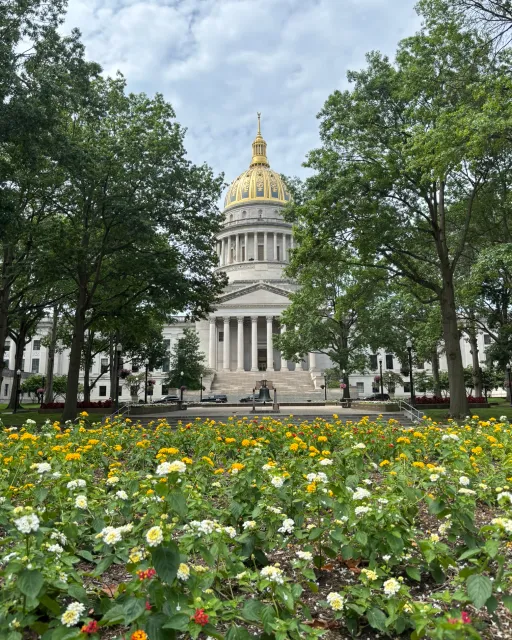
After some fits and starts about where the state capitol would be located, lawmakers settled on Charleston. The original building, erected in 1885, burned down, so Plan B was to build a new, impressive capitol on a site overlooking the Kanawha River. Cass Gilbert, who designed some other state capitols was selected, sketching his ideas out on a visit with his son in 1922.
It’s truly beautiful, and if the Internet is to believed, its gold dome is 5 feet taller than the U.S. Capitol dome.
Later on the site developed into a full complex of other government buildings and the state’s museum. And that’s actually what this article is about.
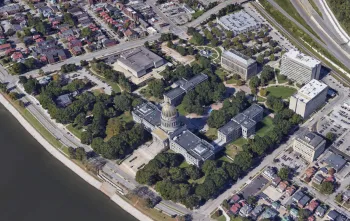
The grounds feel very purposeful in design. There are thoughtful paths throughout with good things to see along the way if you're wandering around.
Arkansas's capitol, by contrast, is also a beautiful building co-designed by the same architect, but feels less like a place you would want to walk around and enjoy the scenery. It was built atop an old state prison foundation that was slightly askew of Little Rock's street grid to save money. (It's capitol was about 1/6th the cost of West Virginia's.) Arkansas's capitol is surrounded by access roads and parking. The grounds are nice, but not impressive. You're supposed to have a mall at a capitol, which in Little Rock is an island with a couple rows of trees in a parking lot. From the end of the "mall" you can't even see the capitol when the trees are leafed out. Although I've been there a couple times, I never felt compelled to walk around. To me the view is about as good from the street as it gets.
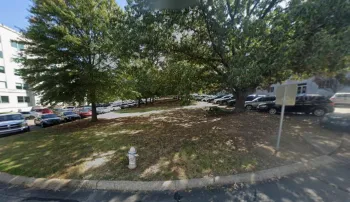
Not so West Virginia's capitol. Everything in the complex feels deliberate. Wandering around was a joy, even with the humidity.
As gardeners, we’re usually thinking of what plants to add to a landscape, but when I was walking along the west side I noticed there was thought put into where not to plant trees. There are numerous examples on the complex where gaps in tree canopy and alignment of the pathways and beds create fantastic views, especially of the capitol itself, but even the more mundane buildings on-site.
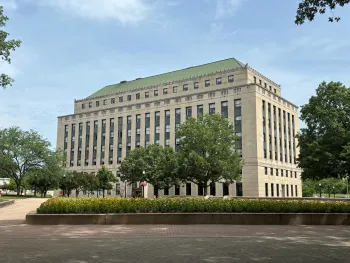
While exploring, I walked up to the large, elevated forecourt in front of the state museum. Nothing remarkable on the way up the steps, but once there, you have what's clearly a designed, planned view of the capitol rotunda.
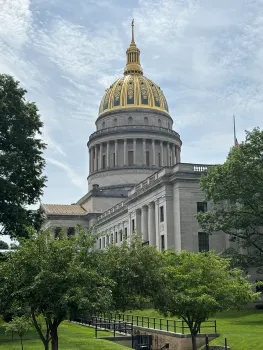
There is a lesson here for us: we live in a place with phenomenal scenery. It’s worthwhile when designing a landscape to consider these views. Today’s sapling trees may block a future view. Try to visualize trees' mature forms. Trees are great, but keep in mind that they will grow. Try to find a balance of shade and clear view lines when possible. How many places in our area have you been where the landscape is not even visible?
Species selection and location at West Virginia's capitol grounds was probably not random. It is very considerate of mature tree sizes and forms to enhance views. Although the site is covered with trees, they also knew where not to place them.
That's a good recommendation for us as well in the Eastern Sierra.

